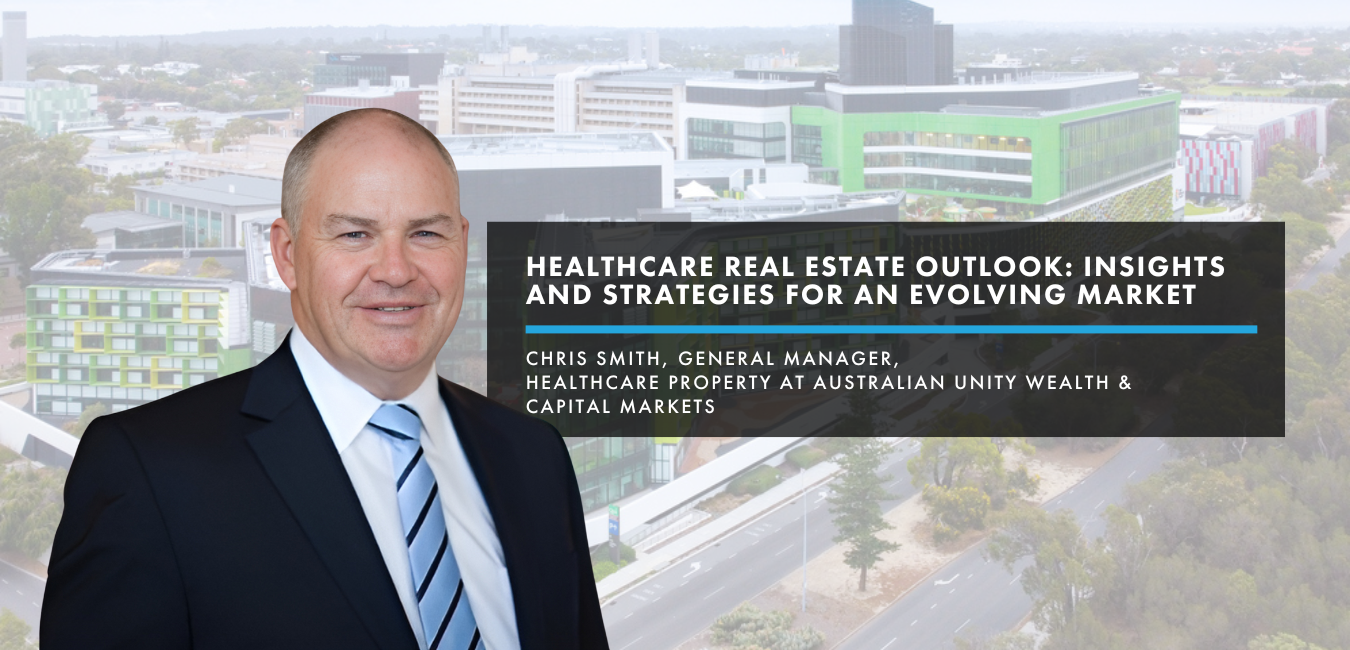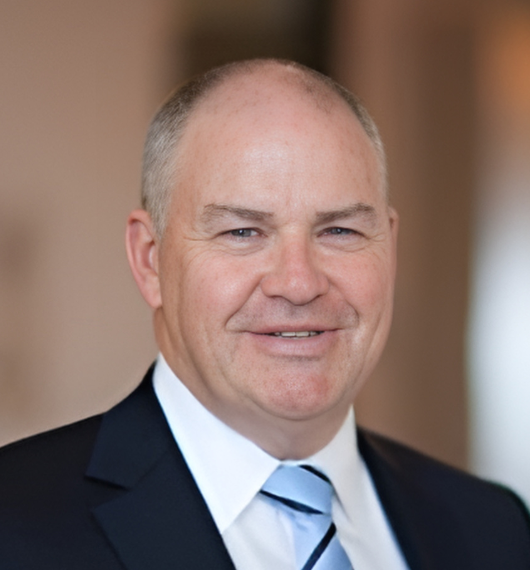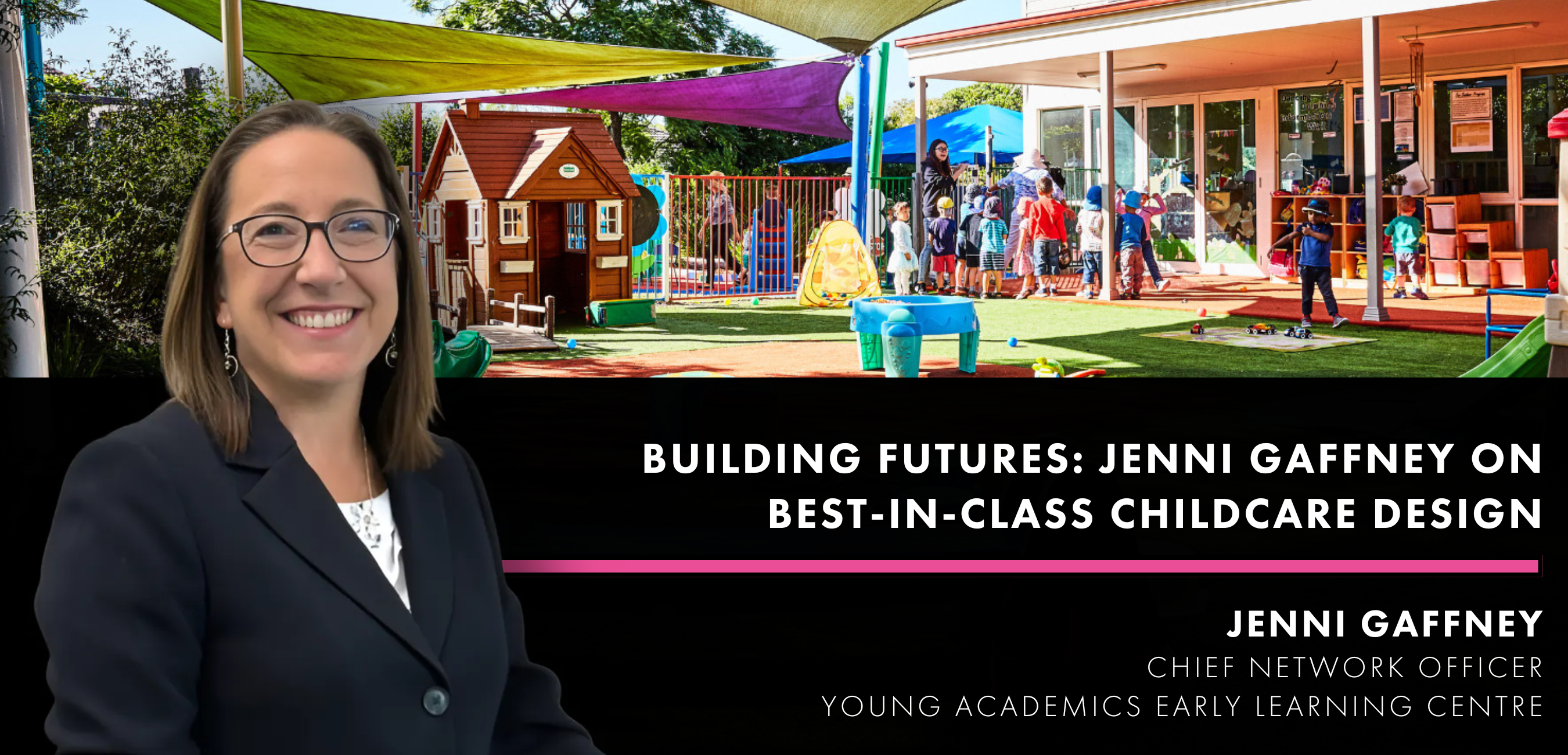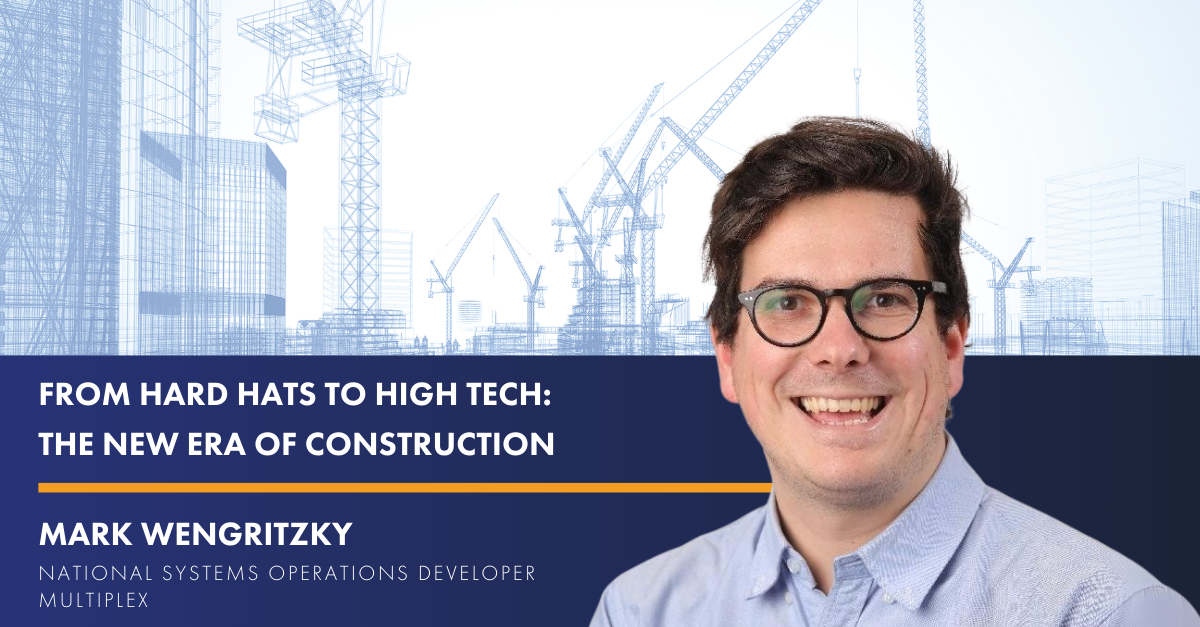FuturePlace Interview Spotlight, Chris Smith
FuturePlace recently interviewed Chris Smith, General Manager – Healthcare Property at Australian Unity Wealth & Capital Markets. Chris has over 20 years of Healthcare Real Estate experience and leads Australia’s largest unlisted Healthcare REIT founded in 1998. He is specialised in funds management and asset management of Healthcare and Retirement Living property, Retail property and general Commercial property. Join Chris at the Healthcare Real Estate Summit to explore navigating the evolving terrain of healthcare real estate.
FuturePlace: What is your outlook for the Healthcare real estate market?
Chris Smith: Now that inflation appears to be under control, and reducing, interest rates should now stabilise. Once interest rates stabilise, we should see capitalisation rates stabilise. Once this happens, we should see property valuations increase as annual rental increases are capitalised. Of course there are always exceptions, particularly for the shorter WALE properties, (WALE being the Weighted Average Lease Expiry), until the lease is extended or options for further terms are exercised, particularly in the medical centre, medical office and life sciences sub sectors. After lease renewal, when the WALE increases, then generally the capitalisation rate will tighten, and the valuation should increase.
Once we see interest rates fall, we may see cap rates tighten. What we don’t know at present is timing, however many economists are suggesting the second half of 2024 for interest rate cuts.
I feel that when comparing to the 2009 valuation write downs, we are close to the bottom of the cycle for cap rate softening, now inflation is trending down, and interest rates appear to have peaked.
From a sales evidence perspective, looking back to the back end of 2023, there was still uncertainty around interest rates, particularly in November. Buyers below say $25 million are still relatively active and this thins out at ~$50 million whilst buyers above $100 million are still relatively scarce. When we see interest rates and cap rates stabilise, we should see larger institutional investors return bringing some competitive tension back into the market.
FuturePlace: How do you think this outlook may change over the short, medium and long term?
Chris Smith: The medium to long term forecast for the 10 year bond rate is ~3.5%. This should mean that A Grade healthcare property could trade at 4.5% to 5% range, B Grade in the 5% to 6% range and C Grade above 6%.
FuturePlace: As the aging population increases and healthcare needs evolve, how can the healthcare real estate industry adapt its development and investment strategies to meet the changing demands for facilities and services?
Chris Smith: The demand for services will continue to grow however the built form must be master planned and flexible to be able to pivot between usages over the life of the building. Over recent years we are seeing a continued trend of a higher theatre to bed ratio which we need to plan for in the longer term.
FuturePlace: With a commitment to providing accessible and innovative healthcare experiences, how is Australian Unity leveraging real estate investment and partnerships to deliver on its vision in the evolving healthcare landscape?
Chris Smith: We continue to grow business relationships that result in repeat business. In addition, we have been developing greenfield sites since 2014. More recently we have been investing more into aged care sub sector as this fragmented sector starts to consolidate. We have just commenced our first greenfield aged care development.
FuturePlace: Is there anything further you’d like to add?
Chris Smith: ESG (Environmental, Social, and Governance) is important to us and our investors. You may be aware of upcoming legislative requirements for carbon emissions reductions and climate related financial disclosure. Much of what we’re doing across the portfolio now helps ready us for those requirements.
In recent years, the team has been spending a considerable amount of time pursuing objectives aligned to the Trust’s ESG strategy. Whilst it’s been difficult in some cases to gain traction with stakeholders, we’re now in the fortunate space to leverage off some of the foundation work we’ve being doing in the background for some years.
Of notable achievements, the Trust has secured a 5 Star Greenstar Performance rating from Green Building Council Australia. STARS (Surgical, Treatment and Rehabilitation Service) is now the first hospital to receive a 5 Star Greenstar Performance rating in Australia. For those unfamiliar with Greenstar, this is an Australian sustainability and certification rating tool which is used to assess the operational performance of existing buildings and it covers a number of components including energy, water, materials, land use & ecology and emissions. It is already widely used in commercial office buildings.
Sunshine Private Hospital in Victoria which was recently completed is also in the process of obtaining Greenstar Rating Design and ‘As Built’ certification for a 5 star outcome. The Wyvern Private Hospital in Terrey Hills in NSW, which is currently under construction, has been designed to achieve the international WELL Gold standard for sustainability which, on completion, we expect will be the only hospital in Australia to achieve the rating. For those not familiar with rating tools, the WELL building standard focuses on similar components as Greenstar but also on the impact of buildings on human health and wellness.
We have also now completed our first round of NABERS (National Australian Built Environment Rating System) Energy and Water ratings across our aged care facilities.
2nd Annual healthcare REal Estate summit
Chris will be speaking at the 2nd Annual Healthcare Real Estate Summit as part of an owners panel discussion titled ‘Unlocking Success – Navigating the Evolving Terrain of Healthcare Real Estate’ on May 29, 2024, in Sydney.
It brings together over 250+ leading owners, investors, developers, intermediaries and everyone allied to the healthcare real estate sector for a combination of information and networking.







